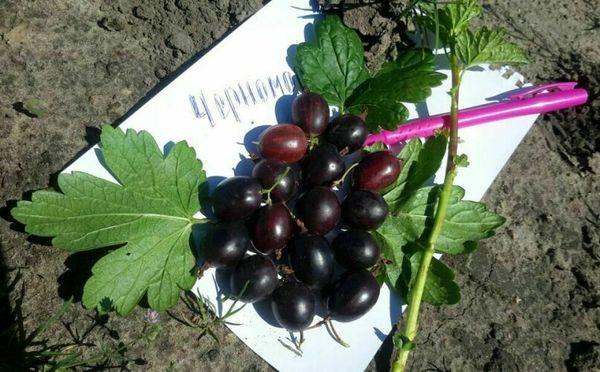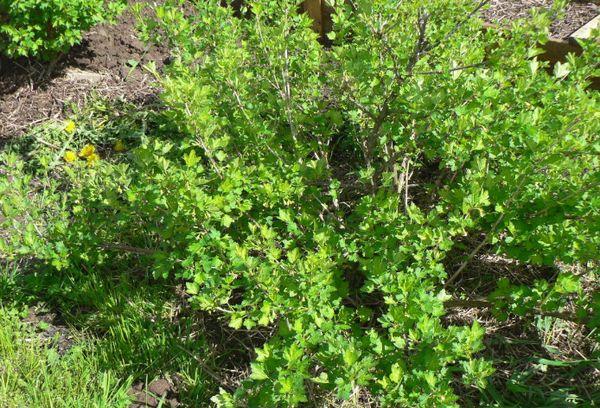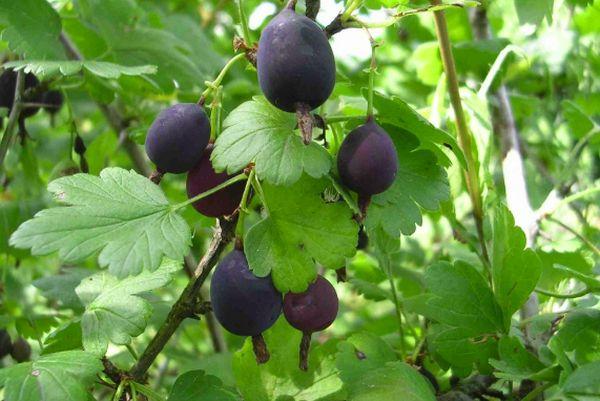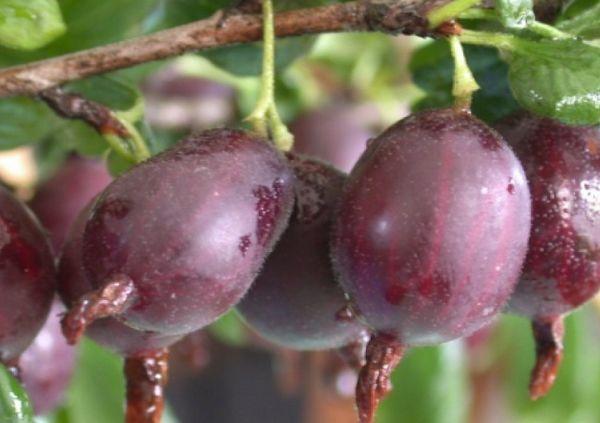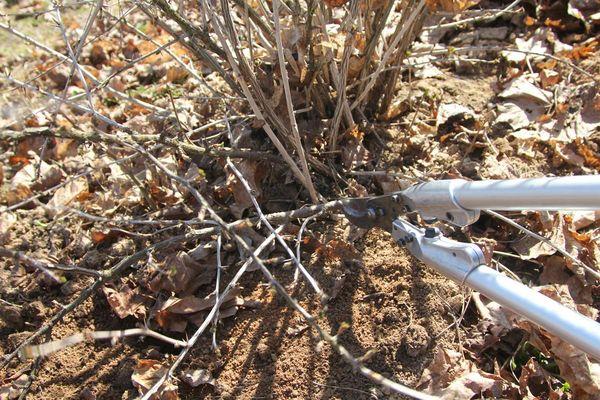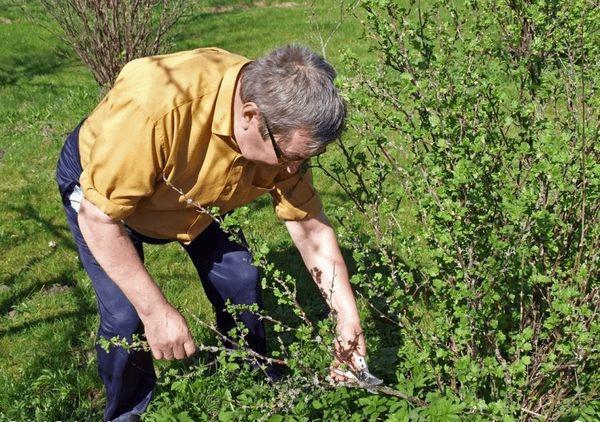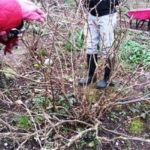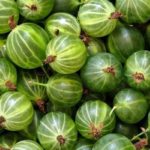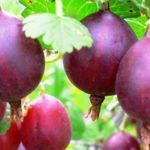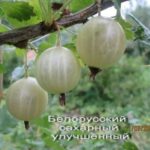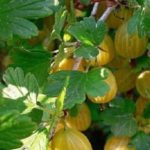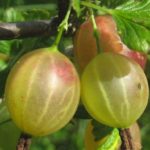The self-pollinating Chernomor gooseberry, similar in appearance to a date, confidently holds its position in the market; the berry is also called northern grapes. He was bred at the All-Russian Research Institute named after I.V. Michurin. Biological material was taken from the Date, Brazilian, Green Bottle, and Seedling Maurera varieties. Growing Chernomor gooseberries is not particularly difficult; the main thing is to know its strengths and weaknesses, the basic rules of planting and care.
- General information about Chernomor gooseberries
- Main positive and negative aspects
- Features of growing the variety
- Selecting a location
- Soil composition
- Well preparation
- Selection of seedlings
- Planting seedlings
- Cultivation care
- Watering
- Fertilizers
- Gooseberry formation
- Disease and pest control
- Breeding the variety
- Collection and storage of berries
General information about Chernomor gooseberries
The berry crop belongs to the mid-late varieties. The bush is positioned as vigorous, its height is 1.5 meters, the tendency to spread is weak, the crown is dense, and the branches grow upright. The shoots are distinguished by a slightly drooping top, light green color and lack of pubescence. Over time they become light.
The Chernomor gooseberry has low thorniness, the spines are single and directed downwards. The light-colored, pubescent buds grow to medium sizes. The leaf mass of the shrub has a dark green color, each plate is divided into 5 blades. When the flowering phase begins, the Chernomor gooseberry appears with medium-sized elongated flowers of bright color.
The berries are small, weighing on average 3 grams. At the stage of technical ripeness, their color is dark red, but after some time it changes to black. The consumer characteristics of Chernomor gooseberries are high: the taste is pleasant, harmonious, sweet and sour, and the aroma is pronounced. The skin is of medium thickness, durable, almost imperceptible veins are weakly branched.
Chemical composition: sugar content is in the range of 8.4-12.2%, acidity 1.7-2.5%. The content of ascorbic acid per 100 grams of product is 29.3 milligrams.
Main positive and negative aspects
When growing Chernomor gooseberries, experienced gardeners note the following advantages:
- precociousness;
- high taste qualities;
- a universal way to use the crop;
- a sufficient degree of transportability of berries over long distances;
- resistance to dry weather;
- is not afraid of harsh winters;
- increased immunity to powdery mildew, major pests (moth);
- weak spiciness;
- does not cause difficulties during cultivation;
- ease of propagation by layering and green cuttings.
But despite the whole list of advantages, the Chernomor gooseberry variety also has its drawback:
- average fruit size.
This only disadvantage of the berry crop is fully compensated by the excellent taste and abundance of the harvest. On average, it is possible to collect 3.1-4.0 kilograms of excellent fruits from one bush.
Features of growing the variety
According to the description, Chernomor gooseberry is not a demanding plant in terms of growing conditions. But to obtain the desired results, you must adhere to a certain growing algorithm.
Selecting a location
Chernomor gooseberry, like other varieties of this berry crop, prefers to grow in areas with a sufficient level of illumination and protection from draft winds. It is not recommended to choose clearings that are shaded or with close groundwater (from 1.5 meters).
If you plant Chernomor gooseberries in an area with high soil moisture, then there is a high probability of putrefactive processes developing on the root system of the planted gooseberry seedlings. Optimal timing for planting: late September-early October.
Soil composition
You can grow Chernomor gooseberries on almost all types of soil: sand, washed-out clay, sod-podzolic. Good productivity indicators of the variety are observed when it is cultivated on peat soils. But it is best to set up a plantation on forest-steppe and gray forest-steppe soils, medium and light loams.
On them, Chernomor gooseberry bushes grow strong, resistant to adverse environmental factors, and have a long lifespan.
It is also possible to plant Chernomor gooseberries on depleted soils, but you must first add old organic humus from composted manure. Thanks to natural fertilizers, the soil structure improves and the degree of fertility increases.
Well preparation
Before planting seedlings, it is necessary to remove all weeds from the site, especially attention should be paid to wheatgrass and thistle. These plants grow quickly, and weeding them out from under the bush in the future will be extremely problematic. Considering the spreading nature of the shrub and its height, plants should be placed at a distance of 1-1.5 from each other so that they do not experience a lack of nutrition or moisture.
The soil for normal growth and development of Chernomor gooseberries is filled with the following nutritional compounds:
- compost or rotted manure (10 kilograms per garden planting);
- wood ash (100 grams);
- double superphosphate (50 grams);
- potassium sulphide (40 grams).
The dimensions of the planting holes are 30x40x40 centimeters.
Selection of seedlings
Before purchasing planting material, it is necessary to inspect it for signs of disease, signs of damage, and rot. The process of preparing seedlings involves pruning shoots to 5 buds and removing dried roots. It is better to buy two-year-old plants with an open root system, which simplifies the selection of a quality plant.
If Chernomor gooseberries are sold in a pot, then their age can be any. The recommended length of leafy shoots is 40-50 centimeters, the roots are abundant and white. The underground part of the bush should tightly braid the earthen ball.Such specimens can be planted 2-3 weeks after purchase.
Planting seedlings
It is recommended to treat the selected planting material with a growth stimulator. Its roots are immersed in the working solution for 10-15 minutes. The technology for planting Chernomor gooseberries involves performing the following actions:
- It is better to pour a layer of fertile soil into the hole in the form of a mound.
- Place the prepared seedling in the center of the hole.
- Straighten its roots and gently sprinkle with soil, slightly compacting it.
- Water thoroughly and mulch the soil around the tree trunk with peat and rotted sawdust. Just dry soil will do.
- After 3-4 days, irrigation and mulching are repeated again.
You should not deepen the root collar of the Chernomor gooseberry too much; it is enough to determine it to a depth of 3-5 centimeters.
Cultivation care
The gooseberry variety Chernomor does not cause problems during the growing process; caring for it consists of performing basic agrotechnical practices, including organizing an irrigation system, removing weeds, fertilizing, protecting from pests and diseases.
Watering
During the dry season, gooseberry bushes should be moistened regularly, starting the procedure as the top layer of soil dries. It is necessary to pour water at the root, avoiding contact with the leaves of the crop. Otherwise, there is a high probability of developing diseases. The sprinkling method does not work in this case.
Excessive humidity in the bite circle is just as dangerous for the bush, as is its deficiency. A lack of moisture in the soil should not be allowed, especially in the spring at the stage of active plant growth and formation of ovaries.In the summer, the bushes experience an urgent need for water 2 weeks before the fruits reach their consumer maturity.
Fertilizers
In late April and early May, the soil under the bushes should be loosened to a depth of 6-8 centimeters, leveled and mulched with peat and humus at the rate of 10 kilograms per garden planting. And in the fall, dig up the organic matter with a pitchfork. In the first 3 years, it is prohibited to use phosphorus and potassium compounds to feed gooseberries, since these substances were placed in the hole when the seedlings were planted. In the spring, you need to add urea in several stages: 15 grams - in early May, 10 grams - at the end of the flowering phase.
In the fourth year after planting the Chernomor gooseberry in a permanent place, a mixture of superphosphate (150 grams), potassium sulfate (40 grams), wood ash (200 grams) and organic matter (8-10 kilograms) should be added to the soil. This feeding is done every 3-4 years.
Gooseberry formation
The next year after planting, 4-5 of the strongest shoots are left on the bush, and the excess ones are completely removed. In the future, also choose 5 shoots that are well located. Branches aged 4-6 years are considered productive; specimens older than 7 years are cut out. Formative pruning is carried out in the fall or before buds open.
Disease and pest control
Gooseberries of the Chernomor variety are characterized by increased immunity to major ailments. But for the purpose of prevention, it should be treated in the spring with a working solution based on Karbofos or ash infusion. If necessary, the manipulation is repeated again.
Breeding the variety
The variety reproduces well through horizontal layering. For these purposes, it is necessary to loosen the soil under the plant and enrich it with organic matter.Bend long and powerful shoots to the ground and secure with hooks. When vertical shoots 10 centimeters long grow, they need to be spudded and watered twice. In the fall, they are separated from the mother bush and planted.
Collection and storage of berries
If the crop is to be transported over long distances, it is recommended to remove the fruits 2 days before they reach consumer maturity. If the berries are used fresh, they are harvested when they are fully ripe. Dry unripe fruits can be stored in a cool room for 3-4 days, and ripened ones - 2 days.
Black Sea gooseberry is a highly productive and unpretentious plant. If you follow all the recommendations regarding its planting and care, you can reap the maximum possible harvest.

